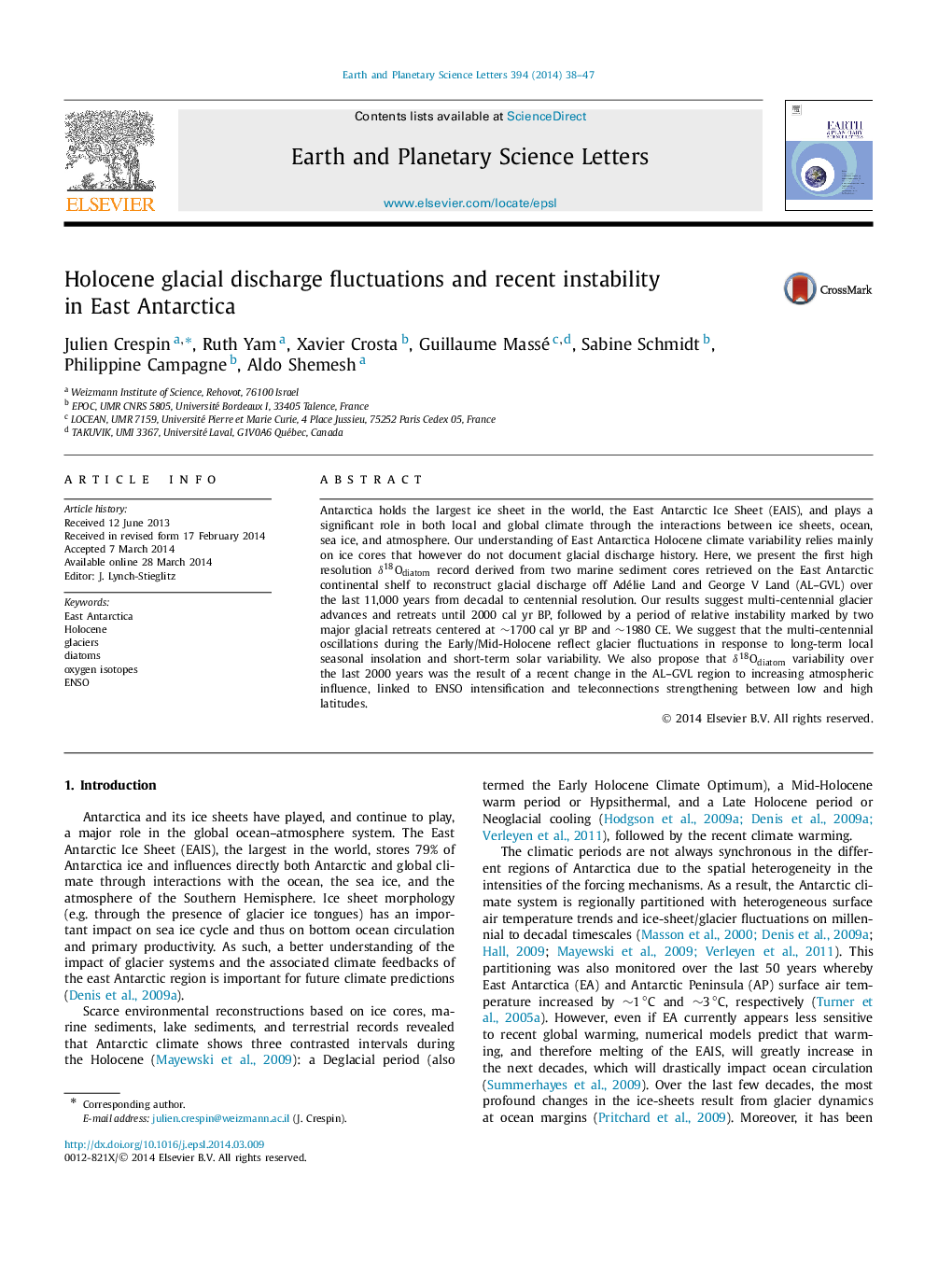| Article ID | Journal | Published Year | Pages | File Type |
|---|---|---|---|---|
| 6429388 | Earth and Planetary Science Letters | 2014 | 10 Pages |
â¢First Holocene high-resolution δ18Odiatom record for East Antarctica.â¢Reconstruction of glacial discharge of Adélie and George V coast (East Antarctica).â¢Multicentennial oscillations during Early/Mid-Holocene in response to solar activity.â¢Unprecedented glacial discharges during the past 2000 years.â¢Increased variability during the last 2000 years linked to ENSO intensification.
Antarctica holds the largest ice sheet in the world, the East Antarctic Ice Sheet (EAIS), and plays a significant role in both local and global climate through the interactions between ice sheets, ocean, sea ice, and atmosphere. Our understanding of East Antarctica Holocene climate variability relies mainly on ice cores that however do not document glacial discharge history. Here, we present the first high resolution δ18Odiatom record derived from two marine sediment cores retrieved on the East Antarctic continental shelf to reconstruct glacial discharge off Adélie Land and George V Land (AL-GVL) over the last 11,000 years from decadal to centennial resolution. Our results suggest multi-centennial glacier advances and retreats until 2000 cal yr BP, followed by a period of relative instability marked by two major glacial retreats centered at â¼1700calyr BP and â¼1980CE. We suggest that the multi-centennial oscillations during the Early/Mid-Holocene reflect glacier fluctuations in response to long-term local seasonal insolation and short-term solar variability. We also propose that δ18Odiatom variability over the last 2000 years was the result of a recent change in the AL-GVL region to increasing atmospheric influence, linked to ENSO intensification and teleconnections strengthening between low and high latitudes.
